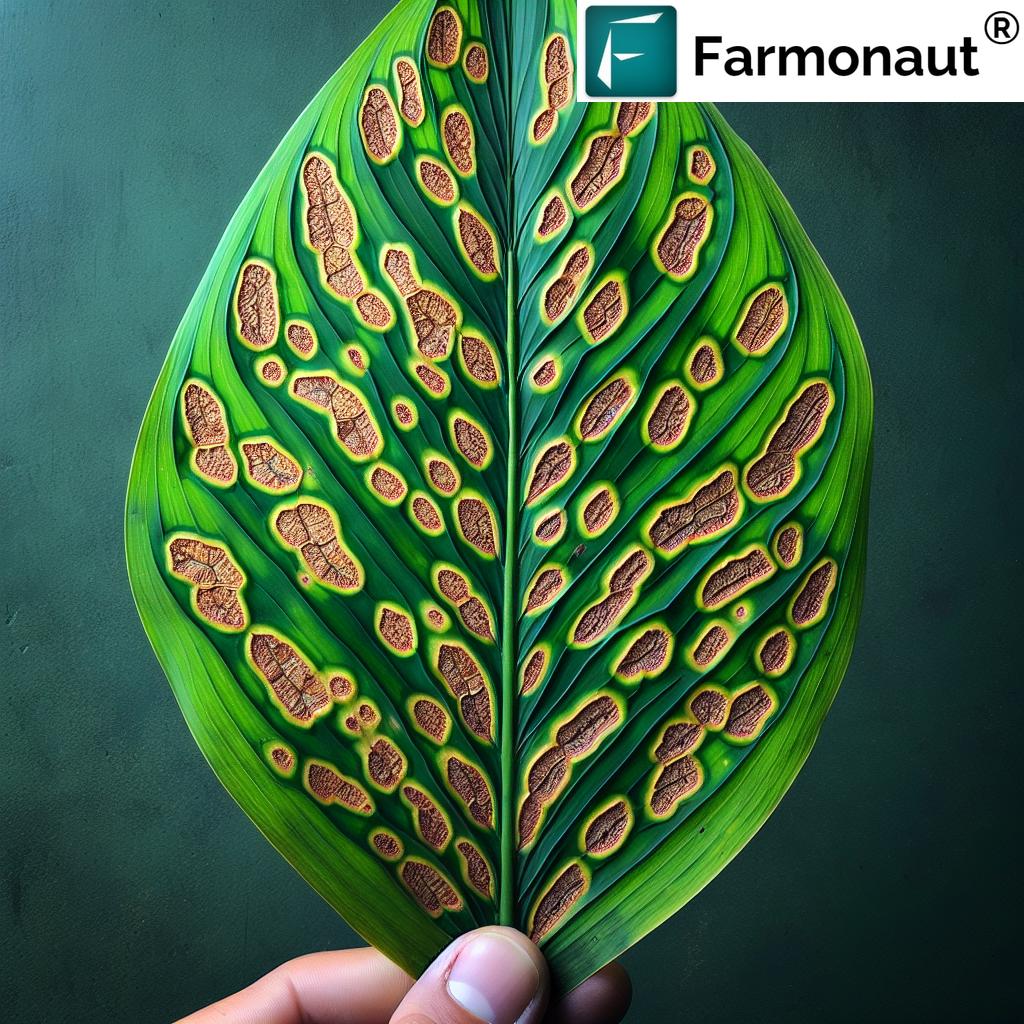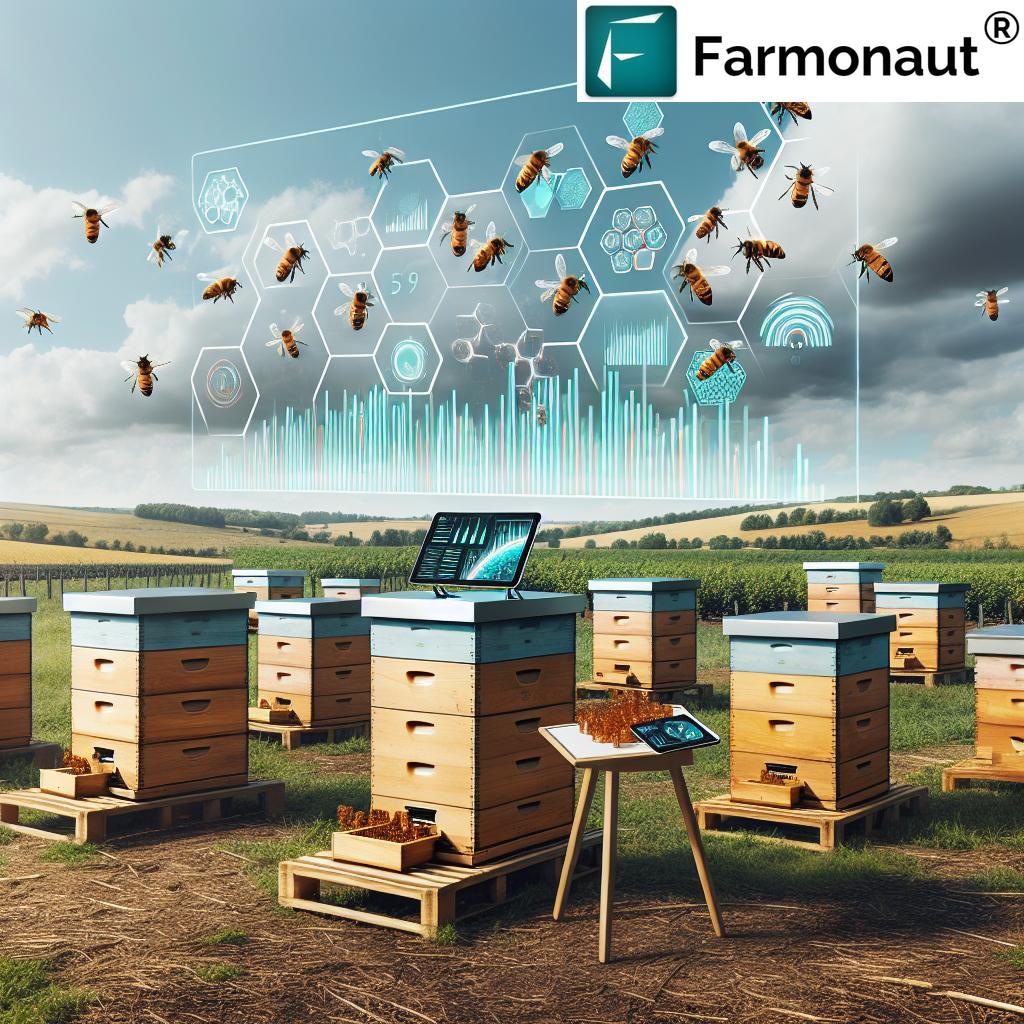Best Ways to Get Rid of Japanese Beetles and Black Aphids: How to Get Rid of Them Sustainably in 2025
“Integrated pest management can reduce Japanese beetle populations by up to 70% without harmful chemicals.”
Understanding Japanese Beetles and Black Aphids: Pests That Threaten Crops, Health, and Forests
Japanese beetles (Popillia japonica) and black aphids (especially Aphis fabae and Myzus persicae) are two of the most notorious, invasive insect pests that continue to pose significant challenges to crops and forestry around the world, especially in 2025. Recent increases in global temperatures, shifting crop patterns, and trade have further exacerbated the ongoing challenges these pests create for farmers and foresters alike.
Japanese Beetles: These small, iridescent insects feed on a wide variety of plants, including fruits, vegetables, ornamental plants, and trees. Their voracious feeding habits skeletonize the leaves of over 300 plant species by eating the tissue between veins. This not only causes significant damage to foliage, compromising photosynthesis and stunting plant growth, but also leads to reduced yields and increased crop stress. The larvae or white grubs live underground, where they feed on grassroots, further weakening plants and sometimes killing young saplings, lawns, and other ground crops. The dual threat of adult and larval damage makes management a top priority.
Black Aphids: Black aphids are small, soft-bodied insects that attack a broad range of crops including beans, peas, potatoes, and many types of fruits. These aphid pests weaken plants by attaching themselves to stems and leaves to extract vital sap nutrients. In the process, they cause yellowing, curling, and stunted growth. Their excretion, called honeydew, not only promotes the growth of black sooty mold but also attracts ants and other secondary pests. More concerning is their role as vectors for numerous plant viruses, thereby increasing the threat to both plant health, crops, and overall agricultural productivity.
Why Controlling Japanese Beetles and Black Aphids is Essential in 2025
The impact of Japanese beetles and black aphids extends beyond mere cosmetic damage. For farmers, uncontrolled infestations can reduce crop yields by up to 80%, while for foresters, persistent outbreaks can threaten forest health and regeneration efforts. With the value of global agriculture rising, pest management is essential for food security, environmental stability, and sustainable practices.
- Crops at Risk: Beans, peas, potatoes, corn, soybean, fruit trees (apples, peaches), berries, roses, maples, and many more.
- Environmental Impact: Both pests can disrupt local ecosystems, reduce biodiversity, and make habitats more vulnerable to other pests and diseases.
- Agricultural Productivity: Failure to protect crops and forests from these pests leads to economic losses and compromises food supply chains.
Monitoring, Early Detection & Farmonaut’s Satellite Expertise
Monitoring and early detection are the cornerstone of integrated pest management (IPM). Spotting the first signs of beetle or aphid infestations enables timely, targeted interventions that are often less costly and have a lower environmental impact than dealing with full-scale outbreaks.
- Scouting and Surveys: Regular field walks or drone-assisted scouting during active pest seasons (usually late spring through summer) allow for the early discovery of damage—such as skeletonized leaves, sticky honeydew, mold, or direct observation of insects.
- Satellite-Driven Crop Health Monitoring: Modern technologies like Farmonaut’s carbon foot printing service support sustainable farming by enabling farmers, businesses, and governments to track vegetation health, soil conditions, and pest stress across expansive fields. This proactive monitoring is particularly crucial for timely pest control and optimizing resource management.
- Farmonaut Platform Benefits: Our real-time satellite imagery integration and AI-driven crop, plantation, and forest advisory tools help detect pest hotspots; this approach supports both large-scale precision agriculture and efficient IPM, especially in 2025 and beyond.
Best Ways to Get Rid of Japanese Beetles (Popillia japonica): Integrated and Sustainable Approaches
Let’s explore the best ways to get rid of Japanese beetles in 2025—with an emphasis on eco-friendly, integrated pest management practices. Each method below combines tradition with innovation and is backed by current pest science and the latest industry practices.
1. Monitoring and Early Detection: The First Line of Defense
- Regular scouting: Walk fields or gardens at least weekly during the beetle’s active months (late spring through summer). Look for metallic green and bronze adults on foliage and flowers. Examine the undersides of leaves for emerging grubs and larvae.
- Satellites and Sensors: Timely interventions using real-time, satellite-based monitoring (like Farmonaut’s large-scale farm management platform) can pinpoint subtle vegetation stress that signals early infestations.
2. Cultural Controls That Reduce Beetle Populations
- Crop Rotation: Rotation of highly susceptible crops like corn or potatoes with less-preferred varieties reduces grub establishment and overall beetle populations.
- Plant Diversity and Intercropping: Mixing crops and planting ornamentals less attractive to beetles (marigolds, garlic, catnip, chives) can serve as “push-pull” plantings, deterring beetle feeding.
- Soil Health Management: Enhance organic matter content in soil. Healthy soils support natural enemies (like entomopathogenic fungi and nematodes) that suppress grubs and larvae.
3. Mechanical and Physical Controls
- Hand-Picking: On small plots or ornamentals, remove beetles by hand in early mornings (when they’re lethargic) and dispose into soapy water buckets.
- Row Covers: Lightweight row covers or netting during peak beetle flight seasons (usually June–August) protect high-value crops without chemicals.
- Traps: Use pheromone traps 30 meters away from crops to attract beetles away from desired plants. Exercise caution—if used too close, traps may increase local beetle numbers.
Watch: Mastering Crop Protection: A Comprehensive Guide to Common Plant Diseases and Pests
4. Biological Controls: Harnessing Beneficial Organisms
- Beneficial Nematodes: Apply Heterorhabditis bacteriophora or Steinernema species to moist soil in spring or fall. These nematodes hunt and infect grubs within the soil, killing them naturally.
- Entomopathogenic Fungi: Milky Spore Disease (Bacillus popilliae) and Beauveria bassiana can suppress larval beetle populations. These microbial controls infect pests directly, sparing beneficial insects.
- Natural Predators & Parasitic Wasps: Encourage birds (starlings, robins), frogs, ground beetles, and parasitic wasps (Tiphia vernalis) by enhancing habitat diversity with hedgerows or wildflower strips.
Watch: Effective Pest Control: Safeguarding Palms & Maximizing Harvests from Harmful Bugs
5. Chemical Controls: Selective, Sustainable Insecticides
- Neem Oil: Neem oil is an organic, selective insecticide that disrupts beetle feeding and reproduction with minimal risk to pollinators (when applied at dusk/dawn).
- Spinosad or Pyrethrin Products: Targeted sprays provide effective control during severe infestations. Use as a last resort within an IPM framework to avoid resistance build-up.
- Best Practices: Apply only when necessary. Always rotate active ingredients and follow label directions to avoid resistance and protect non-target species.
Watch: Peach IPM Strategies: Control of Diseases and Pests from Spring to Summer
Best Ways to Get Rid of Black Aphids: How to Get Rid of Them in 2025
Black aphids (notably Aphis fabae and Myzus persicae) require a slightly different integrated pest management approach. Here’s a breakdown of the most effective, sustainable, and organic methods for combating these notorious pests in modern agriculture and forestry.
1. Cultural Controls & Resistant Varieties
- Plant Aphid-Resistant Crop Varieties: Choose crop varieties bred for robustness against aphid attack (e.g., certain soybean, bean, and potato breeds certified by agricultural extensions).
- Balanced Water and Fertilizer: Avoid excessive watering or high-nitrogen fertilization. Vigorous, sappy growth is an aphid magnet, so optimize nutrient plans for steady—not lush—growth.
- Destroy Crop Residues: After harvest, remove and destroy infested plant material to curb overwintering egg and larval populations.
“Eco-friendly neem oil treatments control black aphids, achieving up to 90% effectiveness in sustainable crop protection.”
2. Mechanical Controls: Physical Exclusion & Removal
- Water Sprays: A strong stream of water from a hose or motorized sprayer can physically dislodge colonies, especially from the undersides of leaves. Repeat every few days as needed.
- Pruning: Regularly prune and destroy heavily infested parts of plants to prevent aphid colony expansion.
- Reflective Mulches and Sticky Traps: Silver or reflective mulches repel aphids; sticky cards (yellow traps) help monitor and partially reduce populations.
Watch: Mastering Aphid Control: From Yellow to Hairy, Indoor to Outdoor – A Comprehensive Guide
3. Biological Controls: Strength in Beneficial Insects and Microbial Solutions
- Natural Predators: Boost lady beetle, lacewing, and hoverfly populations by planting insectary flowers like dill, fennel, and yarrow near main crops.
- Parasitic Wasps: Tiny wasps like Aphidius colemani parasitize aphids and are available for release in greenhouses and open farms.
- Microbial Insecticides: Products containing Beauveria bassiana and Verticillium lecanii are organic and can be sprayed directly. They infect aphids and suppress populations without harming pollinators or other beneficial insects.
Watch: Soybean Aphid Control: Effective Scouting and Control Strategies for Optimal Crop Yield
4. Selective & Organic Insecticides: Thoughtful Chemical Control
- Insecticidal Soaps: Disrupt aphid cell membranes, causing rapid mortality. Safe for organic use, but require thorough, repeated coverage.
- Neem Oil: A proven, multi-action bio-insecticide that interferes with aphid feeding and reproduction. Best applied in the evening to protect pollinators.
- Horticultural Oils: Petroleum-based and some plant-based oils help smother aphid eggs and colonies on crops and trees.
- Neonicotinoids (with Caution): May be used in severe infestations but can harm beneficials and pollinators if misapplied.
Pro Tip: Always rotate chemical classes and spray only when truly needed to prevent resistance and minimize environmental impact.
Watch: Aphid Control on Farms: Grounded Strategies for Sustainable Pest Control
5. Environmental and Preventative Measures
- Avoid Broad-Spectrum Insecticides: These often kill beneficial predators and parasites resulting in a cycle of recurring aphid infestations.
- Landscape Stewardship: Plant perennial borders, cover crops, and hedgerows to house a diversity of natural enemies year-round.
Watch: Organic Alfalfa Defence: Integrated Pest Management for Aphids and Mosaic Virus Control
Comparative Solutions Table: Best Ways to Get Rid of Japanese Beetles & Black Aphids
| Pest Targeted | Control Method | Sustainability Level | Estimated Effectiveness (%) | Environmental Impact | Required Frequency |
|---|---|---|---|---|---|
| Japanese Beetles | Hand-Picking | High | 60-70 | Low | Daily/Weekly |
| Japanese Beetles | Pheromone Traps | Moderate | 40-60 | Moderate | Bi-weekly; strategic positioning |
| Japanese Beetles | Beneficial Nematodes | High | 70-80 | Low | Seasonal (Spring/Fall) |
| Japanese Beetles | Neem Oil | High | 70-80 | Low | Bi-weekly or after rain |
| Black Aphids | Water Sprays | High | 50-60 | Low | As needed |
| Black Aphids | Natural Predators (Lady Beetles, Wasps) | High | 60-80 | Low | Continuous/Seasonal |
| Black Aphids | Neem Oil/Insecticidal Soap | High | 80-90 | Low | Weekly/Bi-weekly |
| Black Aphids | Horticultural Oil | Moderate | 60-75 | Low | Bi-weekly |
| Black Aphids | Biological Microbial Sprays (Beauveria bassiana) | High | 70-85 | Low | Bi-weekly as needed |
| Both | Crop Rotation and Diversity | High | 50-80 | Low | Seasonal/Rotational |
Emerging Trends in Pest Management 2025: Technology, Precision, and Sustainability
Sustainable agriculture and forestry are entering a new age. Here are the leading-edge trends shaping how we get rid of Japanese beetles, black aphids, and other pests moving forward:
- Precision Agriculture: Satellite imagery and drone platforms (like Farmonaut’s advanced environmental impact monitoring) allow farmers to spot hotspots, stress patterns, and pest outbreaks early, eliminating guesswork in field management.
- AI-Based Decision Support: Farmonaut’s Jeevn AI Advisory System integrates with satellite data to deliver crop-specific, weather-aware pest management advice—empowering farmers to strike a critical balance between yield and environmental stewardship.
- Species-Specific Biopesticides: RNA interference (RNAi) products under development act only on targeted insect genes for beetles or aphids and spare beneficials—this is the future of resistance avoidance and sustainability.
- Blockchain-based Traceability: Tools like Farmonaut’s traceability system allow for transparent supply chains, verifying whether crops were grown using low-pesticide, sustainable pest management.
- Fleet Management: Farmonaut’s fleet management solution streamlines agri-business logistics, ensuring resources are applied only when and where infestations are detected.
- Smart Financing for Resilient Farms: Crop loan and insurance products use remote verification, rewarding pest-smart, IPM-focused management with better loan/insurance rates for risk-averse growers.
Watch: Bug & Spot Battle: Safeguarding Citrus: Aphid & Foliage Health Management
FAQ: Best Ways to Get Rid of Japanese Beetles, Black Aphids – How to Get Rid of Them
What are the most effective non-chemical methods for Japanese beetle control?
Hand-picking, plant diversity, beneficial nematodes, and row covers are highly effective and environmentally safe. Encourage birds and remove infested plants to break reproduction cycles.
Can neem oil be used safely on all crops against black aphids?
Yes, neem oil is a safe, sustainable choice for most vegetable, fruit, and ornamental crops. Apply during evening hours to protect pollinators and reapply after rain for best results.
How often should I monitor for beetles or aphids using remote technology?
For high-value or large-scale crops, monitor at least weekly during peak pest seasons. Satellite apps and AI tools can automate this, so you get notifications of plant stress without daily manual effort.
Are chemical insecticides still recommended for Japanese beetle and aphid control?
Only if absolutely necessary. Prefer selective options (such as neem oil, spinosad, or insecticidal soap) and rotate actives to avoid resistance. Always support with cultural and biological controls.
What is the easiest way to integrate IPM practices on my farm?
Start by monitoring regularly, diversify planting, encourage natural predators, and reserve insecticides as a last resort. Leverage digital tools like Farmonaut’s monitoring and advisory services for evidence-based decisions.
How can I measure the environmental impact of my pest management strategy?
Use satellite-driven tools, like Farmonaut’s carbon foot printing service, to quantify reductions in pesticide application, field input use, and measure changes in biodiversity or carbon sequestration.
Key Resources and Farmonaut Solutions for Sustainable Pest Management in 2025
- Farmonaut Web App and Mobile Apps: For real-time satellite monitoring of crops, pest stress detection, and advisory services, access our web platform or download the Android app and iOS app.
- Farmonaut Satellite API: Integrate advanced satellite, AI, and weather data directly into your own farm or agri-business systems with our public API and get started with the developer docs.
- Large-Scale Farm Management: Secure your farm’s sustainability with Farmonaut’s enterprise platform for tracking, reporting, and responding to crop health and pest risks at scale.
- Traceability and Food Security: Strengthen your compliance and food safety audits with Farmonaut product traceability for supply chain transparency and consumer trust.
Conclusion: Best Ways to Get Rid of Japanese Beetles and Black Aphids for Sustainable Agriculture and Forestry
Integrated, eco-friendly pest management is the key to thriving crops and forests in 2025. By combining cultural, mechanical, biological, and selective chemical controls, farmers and foresters can protect yields, preserve forest health, and reduce environmental impact. Daily monitoring, early intervention, and embracing new technologies—such as satellite monitoring, AI-driven advisories, and blockchain traceability—will shape the future of effective, sustainable pest control practices.
As part of the ongoing movement towards sustainability, it is essential for all in agriculture and forestry to stay informed, adopt innovative IPM strategies, and resist over-reliance on chemical insecticides. The best ways to get rid of Japanese beetles and black aphids rest on an integrated approach—combining ancient wisdom with the breakthroughs of 2025 and beyond. Let’s work together to protect our landscapes, secure food production, and ensure a prosperous, sustainable future for generations to come.












